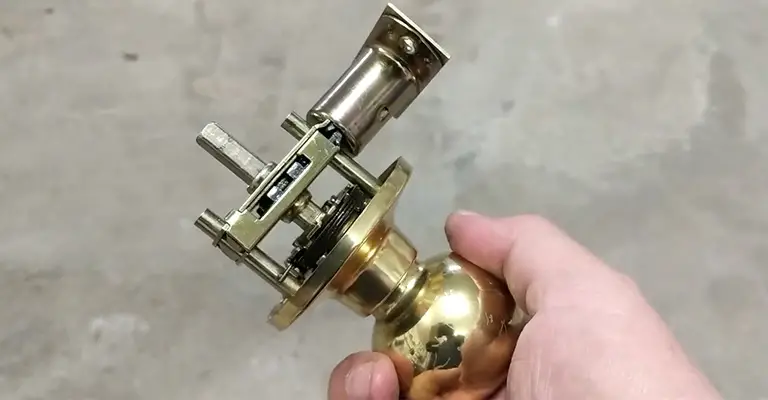The problem with door knobs is that they can get stuck for various reasons. This can be caused by dirt, corrosion, or a worn-out screw. To fix this problem, you must first identify the reason behind the door knob not turning.
If the door knob is not turning because of corrosion or dirt, you need to use a lubricant and turn it until it starts moving.
You may also need to use a screwdriver if there are screws on either side of the knob that is holding it in place.
If no screws are holding the door knob in place, you may need to replace it with a new one and use lubricant on the new one.
If your door knob is not turning because of wear and tear, you will have to replace it entirely with a new one and make sure that you purchase an exact replacement for your model of home or apartment.
What To Do If Your Door Knob Won’t Turn?
A door knob that won’t turn can be a significant inconvenience. So here are some ways to fix it.
1. Adjust As Necessary
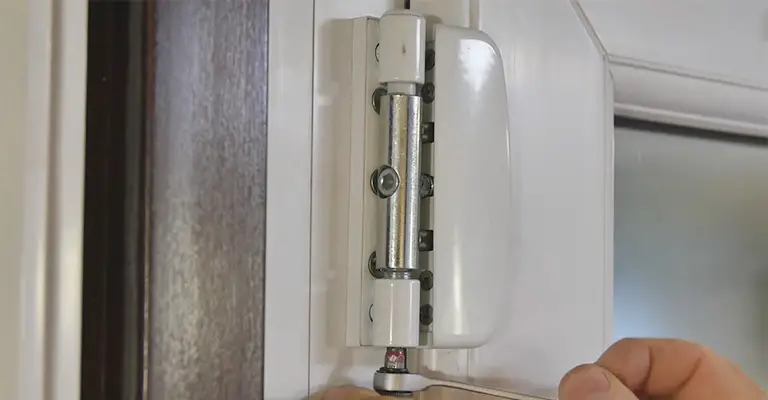
The doorknob needs to be adjusted, the latch bolt needs to be retracted, and the latch bolt needs to be held in place for a moment. Make sure to lubricate the latch bolt’s interior edge with graphite.
Use a rag to wipe off any excess lubricant on the surface after turning the doorknob several times to ensure that the lubricant is evenly distributed.
The strike plate is recommended to be adjusted upward or downward based on your needs. You may have to purchase another handle if you feel that yours needs to be replaced.
For a doorknob to function correctly, it is equipped with a spring-loaded latch. Locks are at rest when the spring is fully extended.
Therefore, by turning the knob and opening the lock, the spring should compress, and you should be able to open the door.
The latch, spring, or both may be defective if the knob turns, but the lock cannot be opened. Incorrect interaction between the knob and latch, spring, or both causes the latch to spin without opening.
Your door lock could have different connections, which may be causing this problem. Ensure that every moving part is aligned correctly, and that the retracting mechanism works before repeating the process.
2. Attach The Knob Again
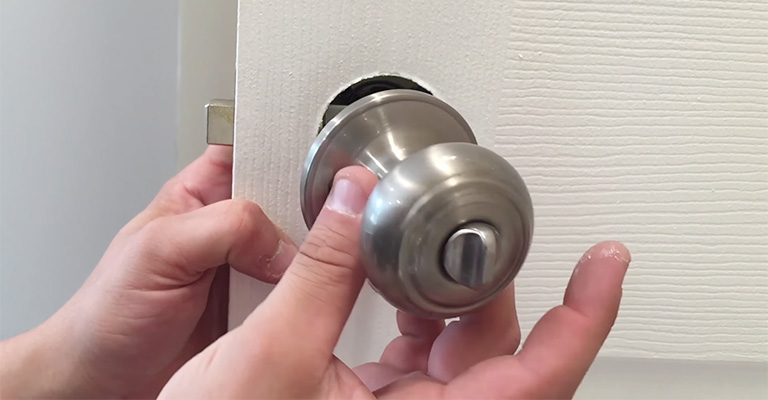
To re-attach the knob, you must fix the problem first. When inserting the knob into the latch mechanism, you must ensure that the knob’s center shaft fits easily through the hole.
In addition, it is essential to ensure the threaded sleeves fit inside the latch mechanism’s two center holes. Make sure the handle is on the right side of the door.
To install the interior doorknob, the retaining screws must be threaded through the mounting holes on the faceplate.
Put it on the exterior doorknob, ensuring it runs into the sleeves. Screw the screws in place and tighten them with a screwdriver.
3. Make Sure The Rotor Lugs Are In Good Working Order
Once troubleshooting has been completed, there may be one more problem to investigate. Two lugs are needed on either side where the spindle goes through the tabular latch.
A follower operates correctly when these lugs are present. However, in some cases, an object may block the lugs and need to be repaired. Tubular latches could obstruct lugs if the borehole is too small when they are installed.
Therefore, a wider hole needs to be drilled in the door. As a result of this scenario, the tubular latch may need to be replaced because of broken springs and other latch components.
4. The Latch Body Needs To Be Checked
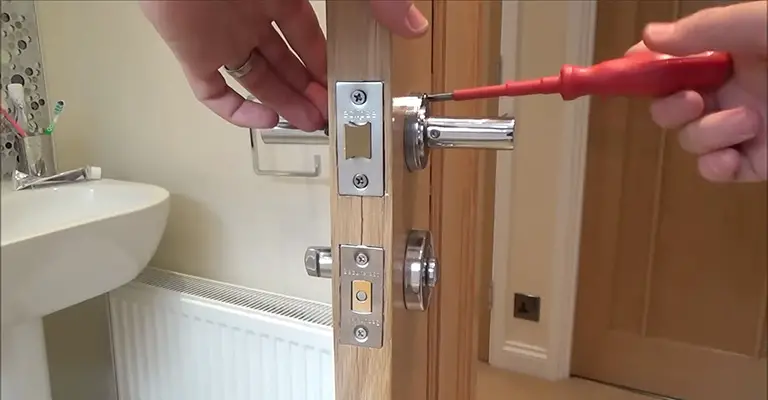
It is possible to identify malfunctions or wear on the latch body by checking it. For example, ensure no components are poking out or springs are loose.
If there is no problem, push the latch tongue again to see if it returns to its normal position.
For example, a broken spring inside the latch might cause it not to spring back. Push the latch tongue into the latch housing after it has been pushed in.
Putting it in without the tongue poking out means the latch spring is broken and needs to be replaced. If most internal components are broken, you may have to replace them completely.
5. Check The Tubular Latch
As long as the doorknobs are working and there are no spring issues, this should be your next step.
After that, you’ve got to remove the latch. After that, you only have to remove the screws from the faceplate on the door’s leading edge.
It’ll slide right out from the door once that’s done. Check if the latch bolt tongue springs back after you push in the latch bolt tongue.
6. Make Sure The Plates Are In Order
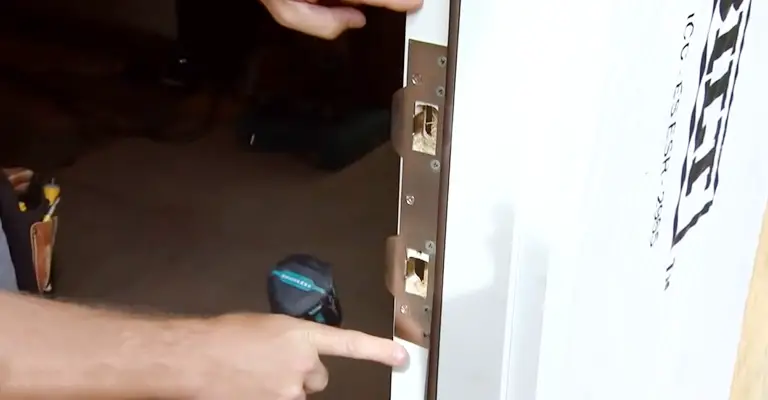
If there are any issues with the plates, you can check them after removing the door handles. Then, when you operate it, you may be able to detect any malfunctions you may encounter.
Every handle has a spring at the rear. Be sure to check the springs for bends or breaks. When you stop moving the handles, the springs should return to a horizontal position.
The only exception to this is if they are broken, in which case you may have to replace them. WD40 works as a lubricant on door handles, so test it before replacing them.
7. The Latch And Doorknob Assembly Should Be Checked
Make sure the latch is in good working order. For example, there might be a misalignment, or something caught in the doorknob if it is retracted but does not turn.
You can fix the problem by placing a flat screwdriver above the latch and tapping it gently using a hammer. Make sure you repeat the process on the underside as well.
If it has been caught on something, it should be freed. Check the doorknob assembly when the latch doesn’t seem to be the problem.
First, the doorknob must be uninstalled from the door by removing all the screws from the plate. Next, check the mechanism inside the doorknob to see if it has any problems.
If you encounter an obstruction, use needle-nose pliers to remove it. The doorknob may need to be replaced if there is a major problem with the mechanism, such as a broken component.
8. Jiggle The Door Knob And Lubricate
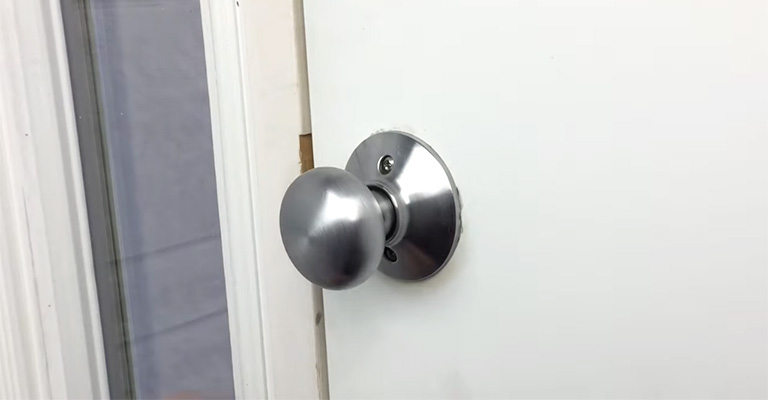
Sometimes the problem may just be a minor issue that can be solved by jiggling the doorknob to loosen the stuck part.
This trick usually works when springs are not correctly positioned, or the latch does not extend or retract properly. Whenever you jiggle the doorknob, hold it gently to avoid worsening the problem.
It is important to remember that if the problem is complex, vigorously, and carelessly jiggling may make it worse. The doorknob needs to be handled carefully so that it doesn’t break.
Apply a few drops of graphite to your door knob after finding the right lubricant. If it doesn’t spread evenly, turn the knob a few times.
Once the knobs have been lubricated, check to see if any rust has developed. The lubricant can be applied to any stuck parts to loosen them.
Final Words
It is common for door knobs to become stuck due to elements such as humidity and temperature changes. These problems may disappear when these conditions change. However, they may persist if they do not change.
Despite your best efforts, they may persist, but you do not have to hire a maintenance specialist or spend much money on them.
It might be helpful to jiggle the doorknob to loosen up the stuck part, use recommended lubricants, or check the doorknob assembly to fix a doorknob that won’t turn.
The good news is that you can fix these things without having to hire a specialist.

